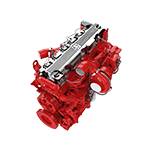Dec . 23, 2024 14:04 Back to list
brake drum types
Understanding Brake Drum Types A Comprehensive Overview
Brake drums are integral components of a vehicle's braking system, primarily found in older cars and certain heavier vehicles where robust stopping power is essential. Despite the advancement in brake technology, brake drums continue to play a crucial role in both safety and performance. Understanding the different types of brake drums can greatly aid in maintaining vehicle efficiency and safety.
What Are Brake Drums?
A brake drum is a cylindrical component that houses the brake shoes. When the brakes are applied, the shoes are forced against the inner surface of the drum, creating friction that slows down the wheel. The effectiveness of this system requires a careful balance of materials, design, and thermal management to prevent overheating and wear.
Types of Brake Drums
1. Standard Brake Drums Standard brake drums are made from cast iron and have a simple design. They are widely used due to their reliability, durability, and cost-effectiveness. Designed for average driving conditions, they provide adequate stopping power for most standard passenger vehicles.
2. Finned Brake Drums Finned brake drums are designed with external ribs or fins that enhance cooling. These drums dissipate heat more effectively during prolonged braking scenarios, making them ideal for vehicles that are subjected to heavy use, such as trucks or performance cars. The increased surface area allows for better air circulation, which is crucial in preventing brake fade.
3. Aluminum Brake Drums Made from lightweight aluminum, these drums offer superior heat dissipation and are primarily used in high-performance applications. Their lightweight nature helps reduce the unsprung weight of the vehicle, improving handling and acceleration. However, aluminum drums can be more expensive and are not as durable as their cast iron counterparts.
4. Ventilated Brake Drums Ventilated brake drums feature internal passages that allow air to flow through, providing superior cooling during use. This design helps maintain consistent braking performance under demanding conditions, making them popular for racing vehicles and high-performance street cars. These drums are engineered to handle high temperatures while resisting warping and wear.
5. Self-Adjusting Brake Drums While not a type of drum per se, self-adjusting systems are often incorporated into the drum brake design. These mechanisms automatically adjust the position of the brake shoes relative to the drum as they wear down. This feature ensures that optimal braking performance is maintained over time without the need for frequent manual adjustments.
brake drum types

Factors Affecting Brake Drum Selection
When choosing the right brake drum, several factors need to be considered
- Vehicle Type and Use The type of vehicle and how it is used play a critical role in determining the appropriate brake drum. Heavy-duty trucks and performance cars will require more advanced systems compared to standard passenger vehicles.
- Driving Conditions Drivers who frequently navigate mountainous terrain or engage in stop-and-go traffic may benefit from advanced cooling designs, such as finned or ventilated drums.
- Cost vs. Performance While premium materials like aluminum offer performance benefits, they also come with a higher price tag. Vehicle owners must weigh the benefits against their budget.
Maintenance of Brake Drums
Regular maintenance of brake drums can significantly extend their lifespan and performance. This includes periodic inspections for wear, ensuring proper alignment, and replacing brake pads before they wear down completely. Keeping the brake system clean from dust and debris also helps maintain the effectiveness of the braking system.
Conclusion
Brake drums are vital components that significantly influence a vehicle's braking efficiency. Understanding the various types available and their respective advantages can help drivers make informed decisions while selecting parts, ultimately enhancing safety and performance. Whether for standard use or high-performance applications, the right type of brake drum can make all the difference in ensuring a safe driving experience.
-
ROR Web Development: Build Fast, Scalable, Secure Apps
NewsAug.17,2025
-
Scania Brake Drums: OEM Quality for Optimal Safety & Durability
NewsAug.16,2025
-
R.V.I: Advanced Remote Visual Inspection for Precision
NewsAug.15,2025
-
Discover HYUNDA: Innovative Vehicles, Equipment & Solutions
NewsAug.14,2025
-
R.V.I: Unlock Advanced Insights & Real-time Performance
NewsAug.13,2025
-
Kamaz Brake Drum: Durable & Reliable for Heavy Duty Trucks
NewsAug.12,2025
